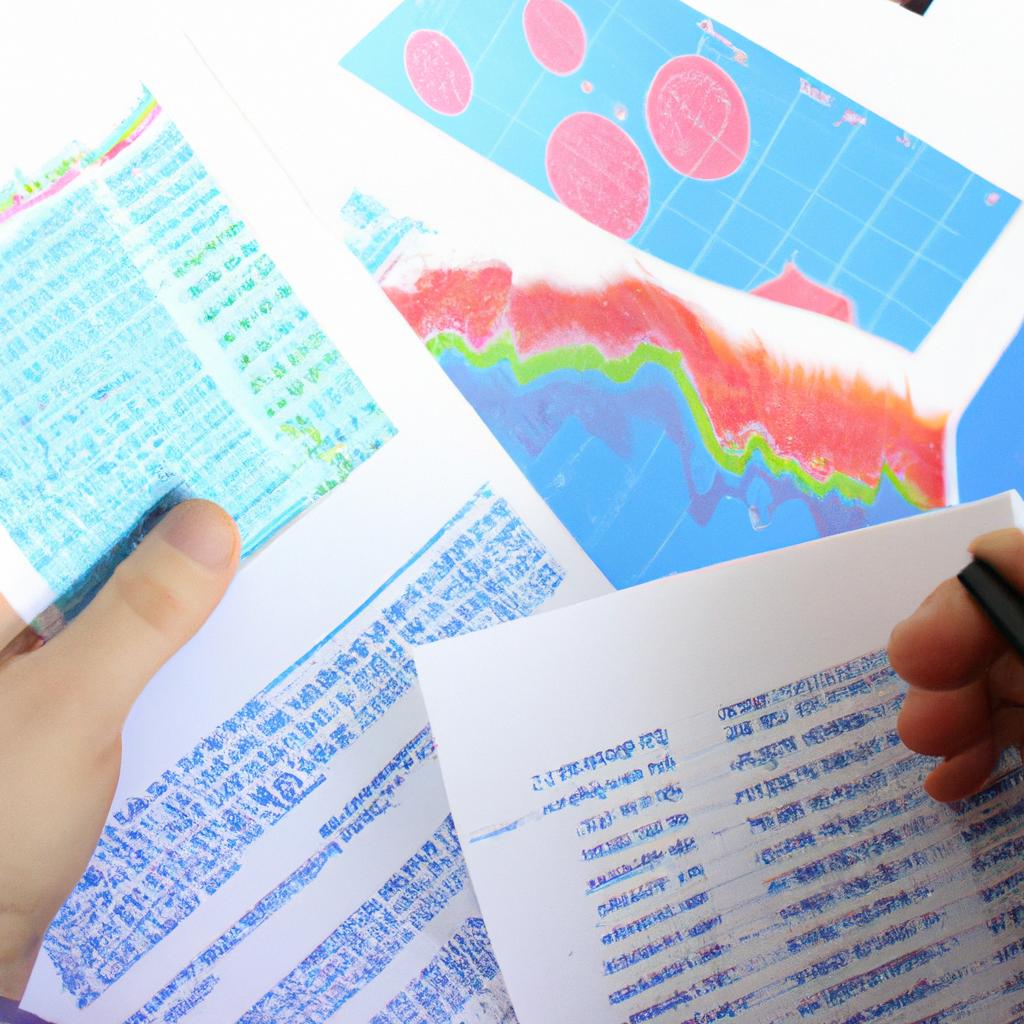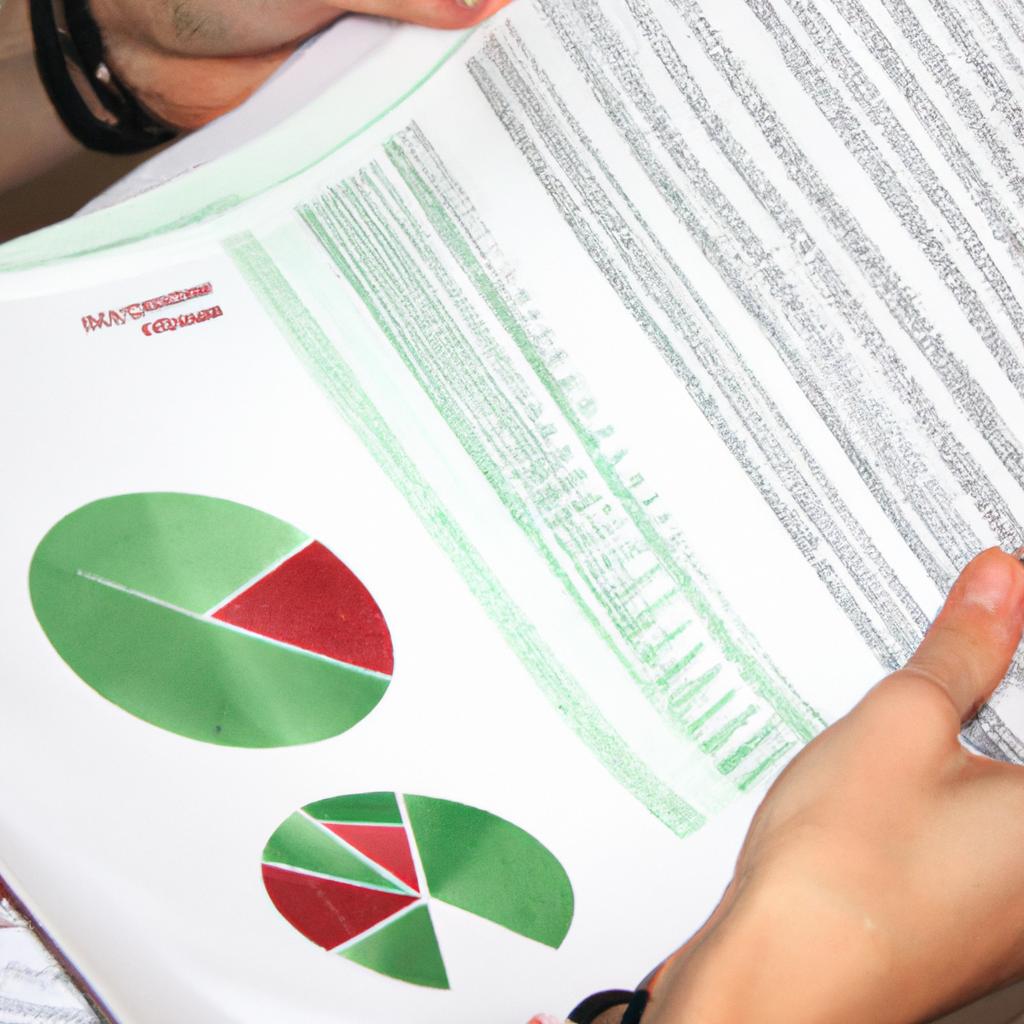Bond Duration: A Key Metric for Bond Investing

Bond duration is a critical metric that plays an essential role in bond investing. It measures the sensitivity of a bond’s price to changes in interest rates, making it a valuable tool for investors seeking to assess and manage risk. Understanding bond duration can help investors make informed decisions about their portfolio allocations and potential returns.
Consider the following hypothetical example: An investor holds two bonds with similar coupon rates but different durations. Bond A has a duration of five years, while Bond B has a duration of ten years. If interest rates were to increase by one percent, the price of Bond A would decrease by approximately 5%, reflecting its shorter duration and lower sensitivity to rate changes. Conversely, the price of Bond B would decline by around 10%, indicating its longer duration and higher susceptibility to fluctuations in interest rates.
By comprehending how bond duration affects prices, investors can effectively evaluate their risk exposure when constructing or adjusting their portfolios. Furthermore, having knowledge of this key metric allows investors to strategically position themselves based on their investment goals and market expectations. In this article, we will delve into the concept of bond duration, explore its significance in bond investing, and discuss practical applications for maximizing investment outcomes.
Definition of bond duration
Bond Duration: A Key Metric for Bond Investing
Imagine you are considering investing in a bond, and you want to accurately assess the risk associated with this investment. One important metric that can help you make an informed decision is bond duration. In simple terms, bond duration measures the sensitivity of a bond’s price to changes in interest rates. By understanding how duration works and its implications for future cash flows, investors can better evaluate the risks and rewards of their bond investments.
Definition of Bond Duration:
Bond duration provides investors with valuable insights into how much they stand to gain or lose due to fluctuations in interest rates. This metric helps quantify the time it takes for an investor to recoup their initial investment through periodic coupon payments received from the bond issuer. Moreover, it also captures potential capital gains or losses as a result of price movements caused by changing market conditions.
To illustrate this concept further, consider an example where an investor purchases two bonds: one with a longer duration (10 years) and another with a shorter duration (3 years). If interest rates rise by 1%, the longer-duration bond will experience a larger decline in value compared to the shorter-duration bond. Conversely, if interest rates were to decrease, the longer-duration bond would appreciate more than its shorter-duration counterpart.
The relationship between bond prices and interest rates becomes evident when we examine four key factors that influence duration:
- Coupon rate: Higher coupon-paying bonds tend to have lower durations because their higher income stream compensates for potential price declines.
- Time to maturity: Longer-dated bonds typically have higher durations as there is more time for interest rate changes to affect their present value.
- Yield-to-maturity: Bonds offering higher yields generally exhibit lower durations since their increased income offsets some potential price volatility.
- Market interest rate level: When overall interest rates are low, even small increases may have significant effects on long-term bonds’ values.
By incorporating these factors into the calculation, bond duration provides investors with a comprehensive understanding of how interest rate changes may impact their investment’s value.
Importance of Bond Duration in Assessing Risk:
Understanding bond duration is crucial for assessing risk in fixed-income portfolios. Investors can use it to compare different bonds and determine which ones align best with their risk tolerance and investment objectives. By analyzing the sensitivity of various bonds’ prices to interest rate movements, investors can make more informed decisions about portfolio construction and asset allocation strategies.
Importance of bond duration in assessing risk
Bond Duration and Interest Rate Risk
Having understood the definition of bond duration, let us now explore its importance in assessing risk for bond investing. To provide further clarity, consider the following example:
Imagine two bonds with identical coupon rates and maturities but different durations. Bond A has a duration of 5 years, while Bond B has a duration of 10 years. If interest rates increase by 1%, Bond A would experience a price decrease of approximately 5%, whereas Bond B would see a price decline of around 10%. This example illustrates how bond duration directly influences the sensitivity of a bond’s price to changes in interest rates.
The significance of bond duration lies in its ability to help investors evaluate the potential impact that fluctuations in interest rates may have on their investments. Here are some key reasons why understanding and considering bond duration is crucial:
- Interest rate risk assessment: By analyzing the duration of a bond, investors can assess how susceptible it is to changes in interest rates. Bonds with longer durations tend to be more sensitive to interest rate fluctuations compared to those with shorter durations.
- Portfolio management: Understanding the overall duration of an investment portfolio allows investors to manage their exposure to interest rate risk effectively. By diversifying across different bonds with varying durations, investors can mitigate potential losses caused by adverse movements in interest rates.
- Income stream predictability: For income-seeking investors, knowing the average duration within their fixed-income holdings enables them to estimate future cash flows more accurately. This information helps plan financial goals and make informed decisions regarding reinvestment or spending strategies.
- Risk-reward tradeoff: The concept of bond duration also aids in evaluating the relationship between risk and reward when selecting bonds for investment purposes. Generally, higher-yielding bonds often come with longer durations and thus carry greater interest rate risk.
To better understand these concepts visually, refer to the table below which demonstrates hypothetical examples comparing various bonds’ characteristics:
| Bond Type | Coupon Rate | Maturity (years) | Duration |
|---|---|---|---|
| Bond A | 2% | 5 | 3.6 |
| Bond B | 4% | 10 | 7.8 |
| Bond C | 1% | 20 | 16.9 |
| Bond D | 3% | 15 | 11.7 |
By considering bond duration alongside other factors such as credit risk and yield, investors can make more informed decisions regarding their fixed-income investments.
Factors affecting bond duration will be discussed in the following section, shedding light on additional aspects to consider when evaluating a bond’s sensitivity to interest rate changes. Understanding these influences is crucial for effectively managing investment portfolios and making sound financial decisions.
Factors affecting bond duration
Bond Duration: A Key Metric for Bond Investing
The importance of bond duration cannot be overstated when it comes to evaluating the risk associated with bond investments. To further understand this concept, let’s consider an example scenario:
Imagine you are a portfolio manager overseeing a diverse bond portfolio on behalf of your clients. Within this portfolio, you have two bonds: Bond A and Bond B. Both bonds have similar credit ratings and coupon rates; however, their durations differ significantly.
Now, let’s explore some factors that affect bond duration:
- Coupon rate: Bonds with higher coupon rates tend to have shorter durations than those with lower coupon rates.
- Time to maturity: The longer the time until a bond matures, the greater its duration will be.
- Yield-to-maturity: Changes in yield can impact a bond’s price, thus affecting its duration.
- Callability feature: Callable bonds often have shorter durations as they may be redeemed before their stated maturity date.
| Factor | Effect on Duration |
|---|---|
| Higher coupon rate | Shorter duration |
| Longer time to maturity | Longer duration |
| Lower yield-to-maturity | Longer duration |
| Non-callable | Longer or equal duration |
This table provides a clear overview of how various factors influence bond duration. By understanding these relationships, investors can make informed decisions based on their risk appetite and investment objectives.
In conclusion, analyzing bond duration is crucial for assessing the risk involved in bond investing. This metric allows investors to evaluate how sensitive a bond’s price is to changes in interest rates.
Relationship between bond duration and interest rates
Transitioning from the factors that influence bond duration, we will now explore the relationship between bond duration and interest rates. Understanding this connection is essential for investors seeking to make informed decisions in the bond market.
To illustrate this relationship, let us consider a hypothetical case study involving two bonds with different durations. Bond A has a duration of five years, while Bond B has a duration of ten years. Suppose interest rates rise by 1%. As a result, we can expect both bonds’ prices to decrease; however, the extent of their price declines will differ due to their respective durations.
The impact of changes in interest rates on bond prices can be summarized as follows:
- Inverse relationship: Bonds with longer durations experience greater price volatility when compared to those with shorter durations.
- Price sensitivity: The higher the duration, the more sensitive a bond’s price becomes to changes in interest rates.
- Magnitude of change: Longer-duration bonds generally exhibit larger percentage changes in price relative to shorter-duration bonds for the same shift in interest rates.
- Time horizon: Investors should consider their investment time horizons when selecting bonds based on their specific risk tolerance and objectives.
| Shorter-Duration Bonds | Longer-Duration Bonds | |
|---|---|---|
| Risk | Lower | Higher |
| Return | Potentially lower | Potentially higher |
| Maturity Date | Near term | Distant future |
| Liquidity | Possibly higher | Possibly lower |
Understanding these key points can help investors navigate fluctuations in interest rates effectively and manage portfolio risk. By considering how bond duration affects price movements, investors can align their investment strategies accordingly.
Transitioning into the subsequent section about “Using bond duration to compare bond investments,” we will explore how this metric can inform investors in comparing different bonds for their investment portfolios. The ability to analyze and interpret bond durations provides valuable insights into the risk and potential returns associated with specific bonds, enabling investors to make well-informed decisions.
Please let me know if there is anything else I can assist you with.
Using bond duration to compare bond investments
In this section, we will explore how bond duration can be used as a tool to compare different bond investments.
To illustrate this concept, let’s consider two hypothetical bonds: Bond A and Bond B. Both bonds have a face value of $1,000 and pay an annual coupon rate of 5%. However, Bond A has a duration of 4 years, while Bond B has a duration of 7 years.
When interest rates rise by one percentage point, Bond A would experience a decline in price equal to its duration multiplied by the change in interest rates (4 x 1% = $40). On the other hand, Bond B would see a larger decline in price due to its higher duration (7 x 1% = $70). This example highlights the inverse relationship between bond prices and interest rates – longer durations result in greater price volatility.
Using bond duration allows investors to make more informed decisions when comparing different bond investments. Here are some reasons why considering duration is crucial:
- Risk assessment: Duration provides insights into the potential risk associated with changes in interest rates. Bonds with longer durations are generally considered riskier because they exhibit greater price fluctuations.
- Investment strategy: Investors may adjust their portfolio allocations based on their risk tolerance and investment objectives. Understanding the relative durations of various bonds helps identify suitable options for diversification.
- Yield analysis: By factoring in both yield and duration, investors can evaluate whether a particular bond offers attractive returns given its level of risk.
- Interest rate expectations: Considering bond durations assists investors in assessing market conditions and predicting future changes in interest rates.
To further understand these concepts, refer to the table below which compares three hypothetical bonds with varying durations:
| Bond X | Bond Y | Bond Z | |
|---|---|---|---|
| Face value | $1,000 | $1,000 | $1,000 |
| Coupon rate | %5 | %3 | %7 |
| Maturity (years) | 10 | 15 | 5 |
| Duration (years) | 6.2 | 9.8 | 4.7 |
As seen in the table above, Bond Y has the highest duration of 9.8 years among the three bonds. This implies that it would be more sensitive to changes in interest rates compared to Bond X and Bond Z.
In summary, bond duration is a vital metric for bond investors as it provides insights into price volatility and risk assessment. By considering duration when comparing different bond investments, investors can make informed decisions based on their risk tolerance and investment objectives.
Moving forward, we will explore strategies for managing bond duration risk without compromising investment returns in the subsequent section.
Strategies for managing bond duration risk
In the previous section, we discussed how bond duration is a key metric used in bond investing. Now, let’s delve deeper into the practical aspect of using bond duration to compare different bond investments.
To illustrate this concept, let’s consider two hypothetical bonds: Bond A and Bond B. Both bonds have a face value of $1,000 and pay an annual coupon rate of 5%. However, Bond A has a duration of 4 years, while Bond B has a duration of 8 years.
When comparing these two bonds based on their durations, several observations can be made:
-
Interest rate sensitivity: The higher the duration, the more sensitive a bond is to changes in interest rates. In our example, since Bond B has double the duration of Bond A, it would experience greater price fluctuations when interest rates change.
-
Price volatility: Bonds with longer durations tend to exhibit greater price volatility compared to those with shorter durations. This means that if interest rates were to rise suddenly, Bond B would likely experience a larger decrease in price than Bond A.
-
Income stability: While both bonds provide an annual coupon payment equal to 5% of their face value ($50), the income stability differs due to their respective durations. As interest rates fluctuate over time, investors holding Bond A would experience relatively stable income compared to those holding Bond B.
-
Investor preferences: Depending on their risk tolerance and investment objectives, investors may prefer either short-duration or long-duration bonds. Shorter-duration bonds offer lower interest rate risk but usually provide lower yields. On the other hand, longer-duration bonds carry higher interest rate risk but often offer higher yields as compensation.
The following table summarizes the key differences between Bond A and Bond B:
| Duration (years) | Interest Rate Sensitivity | Price Volatility | Income Stability | |
|---|---|---|---|---|
| Bond A | 4 | Lower | Lower | Higher |
| Bond B | 8 | Higher | Higher | Lower |
This table highlights the trade-offs between bond duration and various risk factors. It can help investors make informed decisions based on their individual preferences and risk appetite.
In conclusion, understanding bond duration is essential for comparing different bond investments. By considering the relationship between duration, interest rate sensitivity, price volatility, and income stability, investors can assess which bonds align with their investment goals. Remember that while longer-duration bonds offer higher potential yields, they also come with increased price fluctuations in response to changes in interest rates. On the other hand, shorter-duration bonds provide more stable income but may have lower yields. Ultimately, it’s crucial to strike a balance between risk and reward when constructing a well-diversified bond portfolio.






